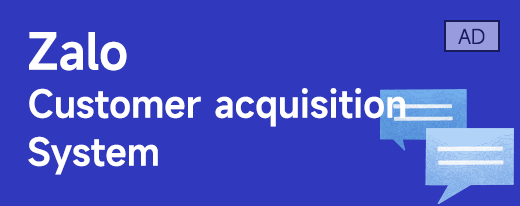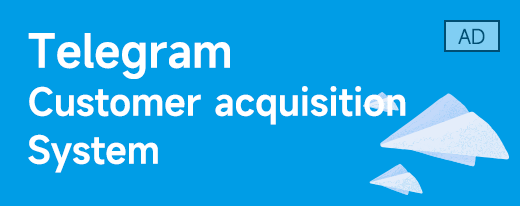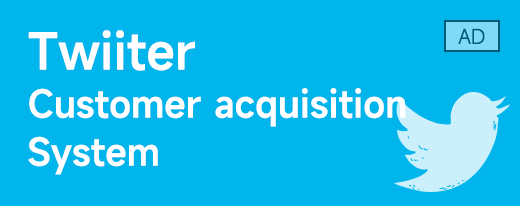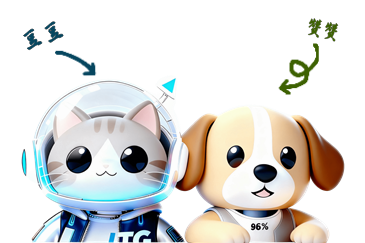In cross-border private domain operations, Telegram groups serve as the core platform for enterprises to connect with users and deliver value. As a "core tool" for Telegram group operations, tags help enterprises quickly categorize user groups and push targeted content, making operational actions more precise. However, in actual management, most enterprises fall into chaos with Telegram group tags: some have illogical tag classifications, randomly piling up dimensions like "region-demand-activity," forcing staff to sift through countless tags when filtering target users; others use tags as a mere formality, creating tags but failing to apply them in operational scenarios, rendering tags "useless data"; even more enterprises rely entirely on manual tagging—for Telegram groups with over 1,000 members, this is not only time-consuming and labor-intensive but also prone to frequent tagging errors. These issues trap Telegram group management in an "inefficient cycle," significantly reducing operational efficiency. To break free from this chaos, the key lies in mastering practical methods for Telegram group tags. The ITG Global Screening tool provides automated and precise support for tag operations, transforming tags from "disorderly" to "efficient enablers" and truly enhancing Telegram group operational efficiency.
I. Common Pain Points in Telegram Group Tag Management: Issues Slowing Down Operations
Pain Point 1: Unstructured Tag Creation with Chaotic Classification Logic
Many enterprises create tags in Telegram groups without unified planning, adding tags arbitrarily as they come to mind. For example, assigning a single user tags like "Southeast Asia-cross-border e-commerce-inquired about logistics-high activity"—which includes region, industry, demand, and activity dimensions. Later, when filtering "highly active users in Southeast Asia," staff must manually exclude irrelevant tags. A task that should take 10 minutes often takes 2 hours. A cross-border cosmetics enterprise once included users tagged "industry peers" in its new product promotion due to chaotic tag classification in its Telegram group, resulting in a marketing message reach rate of less than 25% and wasting significant operational resources.
Pain Point 2: Low Efficiency and High Error Rate in Manual Tagging
Many enterprises still rely on manual tagging for Telegram group users. For groups with over 500 members, operators must record each user’s behavior and needs one by one to add tags. This not only takes 3-4 hours daily but also leads to frequent errors. For instance, a user who "inquired about lipsticks" might be mistakenly tagged as "inquired about foundation." When subsequent lipstick promotion messages are sent, this user fails to receive them, missing conversion opportunities. A cross-border e-commerce enterprise’s Telegram group saw 30% of high-intent users miss targeted outreach due to manual tagging errors, drastically reducing operational efficiency.
Pain Point 3: Disconnected Tag Application, Failing to Empower Operations
Some enterprises create Telegram group tags but fail to apply them in operational scenarios: either treating tags as mere "data records" without using them for user filtering or content pushing, or using tags mismatched with operational goals. For example, aiming to "increase repeat purchases" but filtering users with "region-industry" tags, leading to misalignment between operational actions and objectives. A cross-border education institution’s Telegram group had tags like "enrolled" and "not enrolled" but failed to push post-course materials to "enrolled" users, completely wasting the value of tags.
Pain Point 4: Stagnant Tags with Outdated Data
Many enterprises stop maintaining and updating Telegram group tags after creation, causing tags to become disconnected from users’ actual status. For example, a user tagged "highly active" 3 months ago may become an "inactive user" due to changing needs, but the tag remains unchanged. Operators continue to send high-frequency content to this user, triggering resentment and a 15% month-on-month increase in group exit rates. Such "static tags" not only fail to support precise operations but also damage user experience.
II. Practical Step 1 for Telegram Group Tags: Build a Scientific Tag System to Lay an Efficient Foundation
1. Clarify Tag Classification Logic: Divide by "User Attributes + Operational Scenarios"
A scientific tag system requires clear classification logic. It is recommended to divide tags into two core dimensions—"user attributes" and "operational scenarios"—to ensure tags are non-overlapping and easy to filter:
- User Attribute Dimension: Covers core user information, such as "Region-Southeast Asia (Indonesia)," "Industry-Cross-Border Logistics," "Demand-Sea Freight Quote," "Activity-High (≥5 interactions/week)";
- Operational Scenario Dimension: Aligns with operational goals, such as "Conversion Stage-Potential User," "Conversion Stage-Paying User," "Repeat Purchase Intent-High," "Needs Reactivation-Inactive User."
After a cross-border SaaS enterprise built its tag system using this logic, the number of tags in its Telegram group was reduced from 200 to 80. When filtering "high-intent cross-border logistics users in Southeast Asia," it could directly combine tags like "Region-Southeast Asia + Demand-Logistics + Conversion Stage-Potential," increasing filtering efficiency by 70%.
2. Leverage ITG Global Screening for Automated Tag Data Collection
Manual data collection for tag creation is inefficient. ITG Global Screening enables automated data collection:
- Connect Multiple Data Sources: Configure Telegram group data interfaces, enterprise official website data interfaces, and product trial data interfaces in ITG Global Screening to real-time capture user interaction data in groups (message frequency, likes), official website browsing data (viewed product pages), and product trial data (tested functional modules);
- Automatic Data Classification: ITG Global Screening categorizes collected data by "user attributes" and "operational scenarios." For example, if a user views "cross-border payment functions" on the official website, the system automatically classifies them under "Demand-Cross-Border Payment";
- Data Validation and Deduplication: ITG Global Screening automatically filters duplicate data (e.g., a user browsing the same page multiple times) and incorrect data (e.g., region information conflicting with IP address), ensuring tag data accuracy.
A cross-border logistics enterprise used ITG Global Screening for data collection, increasing tag data accuracy from 65% to 92% and reducing tag creation time by 80%.
III. Practical Step 2 for Telegram Group Tags: Precisely Apply Tags to Empower Operational Scenarios
Scenario 1: User Filtering to Target Specific Groups
Combine tags to quickly filter target users based on operational goals:
- Goal: Improve New User Conversion: Combine tags like "Conversion Stage-Potential User + Clear Demand + Region-Target Market" (e.g., "Conversion Stage-Potential + Demand-Cosmetics + Region-Southeast Asia") to filter high-intent new users and push new product trial benefits;
- Goal: Reactivate Inactive Users: Combine tags like "Activity-Low (<1 interaction in 30 days) + Clear Historical Demand + Conversion Stage-Non-Paying" (e.g., "Activity-Low + Demand-Cross-Border SaaS + Conversion Stage-Potential") to push exclusive discount coupons for reactivation.
A cross-border e-commerce enterprise increased new user conversion rate from 8% to 22% and inactive user reactivation rate by 35% through tag-based user filtering.
Scenario 2: Targeted Content Pushing to Improve Reach Accuracy
Push differentiated content to users with different tags, avoiding a "one-size-fits-all" approach:
- For users tagged "Demand-Lipstick + Conversion Stage-Potential": Push lipstick shade reviews and limited-time discounts;
- For users tagged "Demand-Foundation + Conversion Stage-Paying": Push foundation usage tips and restock reminders;
- For users tagged "Industry-Cross-Border E-Commerce + Activity-High": Push cross-border e-commerce policy interpretations and industry reports.
A cross-border cosmetics enterprise increased its Telegram group message reach rate from 30% to 75% and user interaction rate by 50% through tag-based targeted pushing.
Scenario 3: User Stratification to Optimize Operational Resource Allocation
Categorize users into tiers using tags and allocate resources accordingly:
- Core User Tier (Tags: High Activity + High Demand + Paying User): Assign dedicated customer service for one-on-one follow-up and customized services;
- Potential User Tier (Tags: Medium Activity + Clear Demand + Potential User): Conduct in-depth engagement via live community sessions and product demonstrations;
- Basic User Tier (Tags: Low Activity + Vague Demand + Potential User): Push introductory content and new-user benefits to gradually boost engagement.
A cross-border education institution improved operational resource utilization by 60% and core user repeat purchase rate by 40% through user stratification.
IV. Practical Step 3 for Telegram Group Tags: Regularly Optimize Tags to Maintain Data Timeliness
1. Monthly Tag Data Review to Eliminate Useless Tags
Use ITG Global Screening to analyze tag usage frequency and operational effectiveness:
- If a tag like "Demand-Traditional Logistics" has a usage frequency below 5% for 2 consecutive months and fails to drive conversions, delete it directly;
- If a tag like "Activity-Medium" covers over 500 users, split it into "Activity-Medium-High (3-4 interactions/week)" and "Activity-Medium-Low (1-2 interactions/week)" to improve precision.
A cross-border SaaS enterprise reduced useless tags in its Telegram group by 60% and increased tag filtering accuracy by 30% through monthly reviews.
2. Real-Time Tag Updates Based on User Behavior Changes
Use ITG Global Screening to monitor user behavior in real time and update tags automatically:
- When a user transitions from "non-paying" to "paying," the system automatically updates the tag from "Conversion Stage-Potential" to "Conversion Stage-Paying";
- When a user’s interaction frequency drops from "5 times/week" to "1 time/week," the system automatically updates the tag from "Activity-High" to "Activity-Low" and alerts operators to follow up.
A cross-border e-commerce enterprise increased the match rate between tags and users’ actual status by 85% through real-time tag updates, avoiding operational errors caused by outdated tags.
3. Add New Tags as Needed for Business Adjustments
When expanding business or changing operational goals, add new tags promptly:
- When launching "new cross-border ERP features," add the tag "Demand-New ERP Features";
- When setting "increasing referral rates among existing users" as a new goal, add tags like "Referral Intent-High" and "Referrer User."
A cross-border logistics enterprise added the tag "Demand-Specialized Logistics Routes" and pushed route-specific discounts to users with this tag, increasing related business orders by 50%.
V. Core Role of ITG Global Screening in Tag Operations: Reduce Costs, Boost Efficiency, and Improve Precision
- Automated Tagging to Reduce Labor Costs: Manual tagging for 1,000 users takes 8 hours, while ITG Global Screening completes it in 30 minutes, reducing costs by 94% and minimizing human errors;
- Multi-Source Data Integration to Enrich Tag Dimensions: Break free from the limitations of Telegram group data by integrating official website, product, and social media data to create more comprehensive tags. For example, if a user follows "cross-border e-commerce news" on social platforms, the system automatically adds the tag "Interest-E-Commerce News";
- Real-Time Data Synchronization to Ensure Tag Timeliness: ITG Global Screening updates tags in real time when user behavior changes, avoiding "static tag" issues and supporting precise operations;
- Compliance Verification to Mitigate Operational Risks: Equipped with global data compliance templates, it automatically verifies compliance with regulations like the EU GDPR when collecting user data for tags, preventing violations.
VI. Conclusion
The value of Telegram group tags lies in transforming "disordered data" into "operational momentum" through scientific practice. To eliminate chaotic management, enterprises must follow three practical steps—"building a scientific tag system, precisely applying tags, and regularly optimizing tags"—and leverage the ITG Global Screening tool to achieve automated and precise operations. In the increasingly competitive landscape of cross-border private domains, proficient practical skills in Telegram group tags help enterprises quickly target users, optimize resource allocation, and enhance operational efficiency—becoming a key driver of growth in the Telegram ecosystem. Whether for small and medium-sized enterprises or large corporations, mastering practical tag methods will transform Telegram group management from "inefficient chaos" to "efficient order," securing an advantage in the cross-border market.










